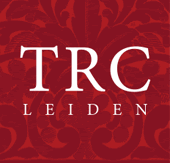Soft, smooth, silky – these are just some of the terms conjured up by the word VELVET, but velvet is much more than soft and silky, and often it is not even smooth!
Velvet is one of the most luxurious textiles that has been produced in Europe and elsewhere for at least one thousand years. Despite the fact (or perhaps because of it) that it is very expensive to make in both time and raw materials, velvet became an essential item for any self-respecting royal court or church in Europe and is now made and used in many places throughout the world.
Velvet is used for garments, and may be covering the body, literally from head to foot, and is worn by men, women and children. Houses are also decorated with velvets, and the soft material has been used for soft-furnishings as well as upholstery – think of the velvet cloth that was placed over a piano or table, not to mention the precious velvet curtains.
The English word velvet, the French velour and Dutch fluweel originate from the Latin word villus, meaning ‘shaggy hair’ or ‘tuft of hair’, and Vulgar Latin villutittus or villutus or, more formally, velutum (‘shaggy cloth’). In modern terminology, the various terms are used interchangeably, whereby in the English-speaking world the word velour tends to have a lower connotation than velvet.
Velvet is a type of cloth whereby short loops are worked into a predetermined set of warp or weft threads (for instance, every sixth thread), and these loops are subsequently (but not always) cut to create a raised, or piled surface. There are many types of velvets. They can be divided into weft-pile (corduroy, velveteen) and warp-pile forms, which again come in many different types. There are also knitted versions that have been available for over 150 years. The term velvet is particularly used for warp-pile forms, while knitted forms are often called velours, but again, the terms are sometimes used for the same types of cloth.



